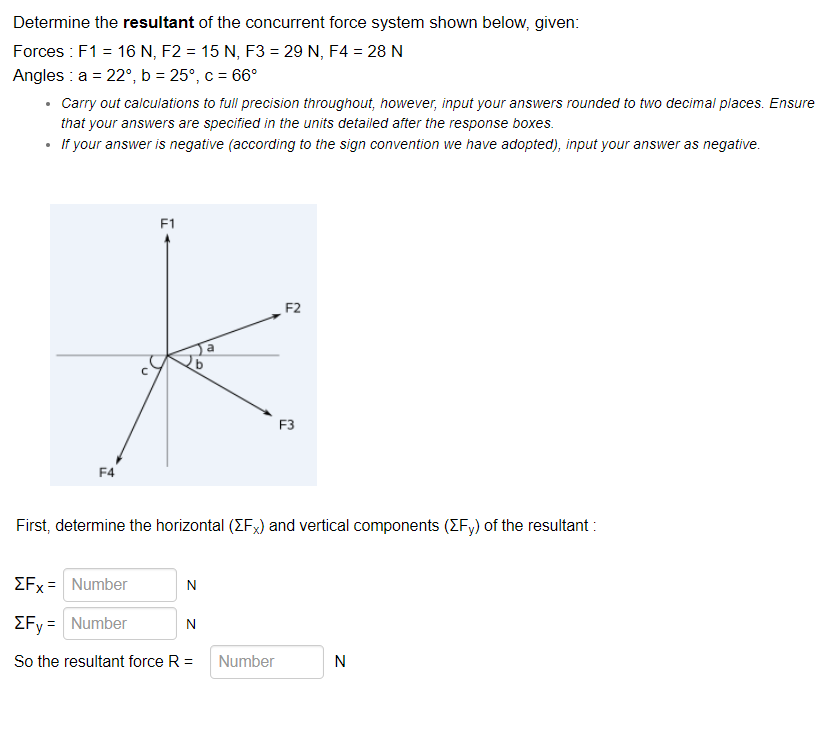Home /
Expert Answers /
Mechanical Engineering /
determine-the-resultant-of-the-concurrent-force-system-shown-below-given-forces-mathrm-f-1-pa379
(Solved): Determine the resultant of the concurrent force system shown below, given: Forces: \( \mathrm{F} 1 ...
Determine the resultant of the concurrent force system shown below, given: Forces: \( \mathrm{F} 1=16 \mathrm{~N}, \mathrm{~F} 2=15 \mathrm{~N}, \mathrm{~F} 3=29 \mathrm{~N}, \mathrm{~F} 4=28 \mathrm{~N} \) Angles : \( a=22^{\circ}, b=25^{\circ}, c=66^{\circ} \) - Carry out calculations to full precision throughout, however, input your answers rounded to two decimal places. Ensure that your answers are specified in the units detailed after the response boxes. - If your answer is negative (according to the sign convention we have adopted), input your answer as negative. First, determine the horizontal \( \left(\sum F_{x}\right) \) and vertical components \( \left(\sum F_{y}\right) \) of the resultant : \[ \begin{array}{ll} \Sigma F_{X}= & N \\ \Sigma F_{y}= & N \end{array} \] So the resultant force \( \mathrm{R}= \) \[ \mathrm{N} \]
Expert Answer
Procedure: Determine the X component of each force and sum them up. Determine the Y component of each force and
